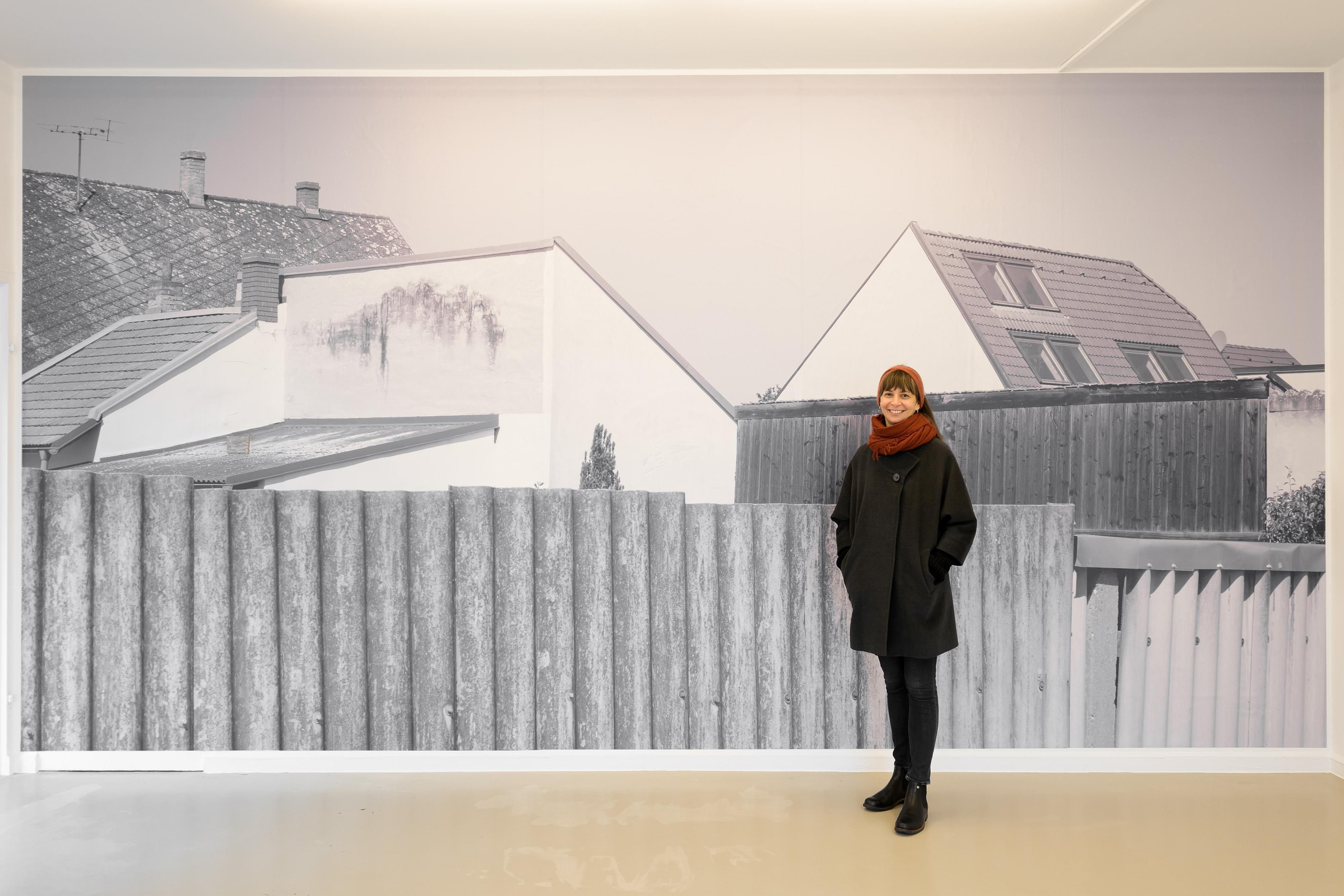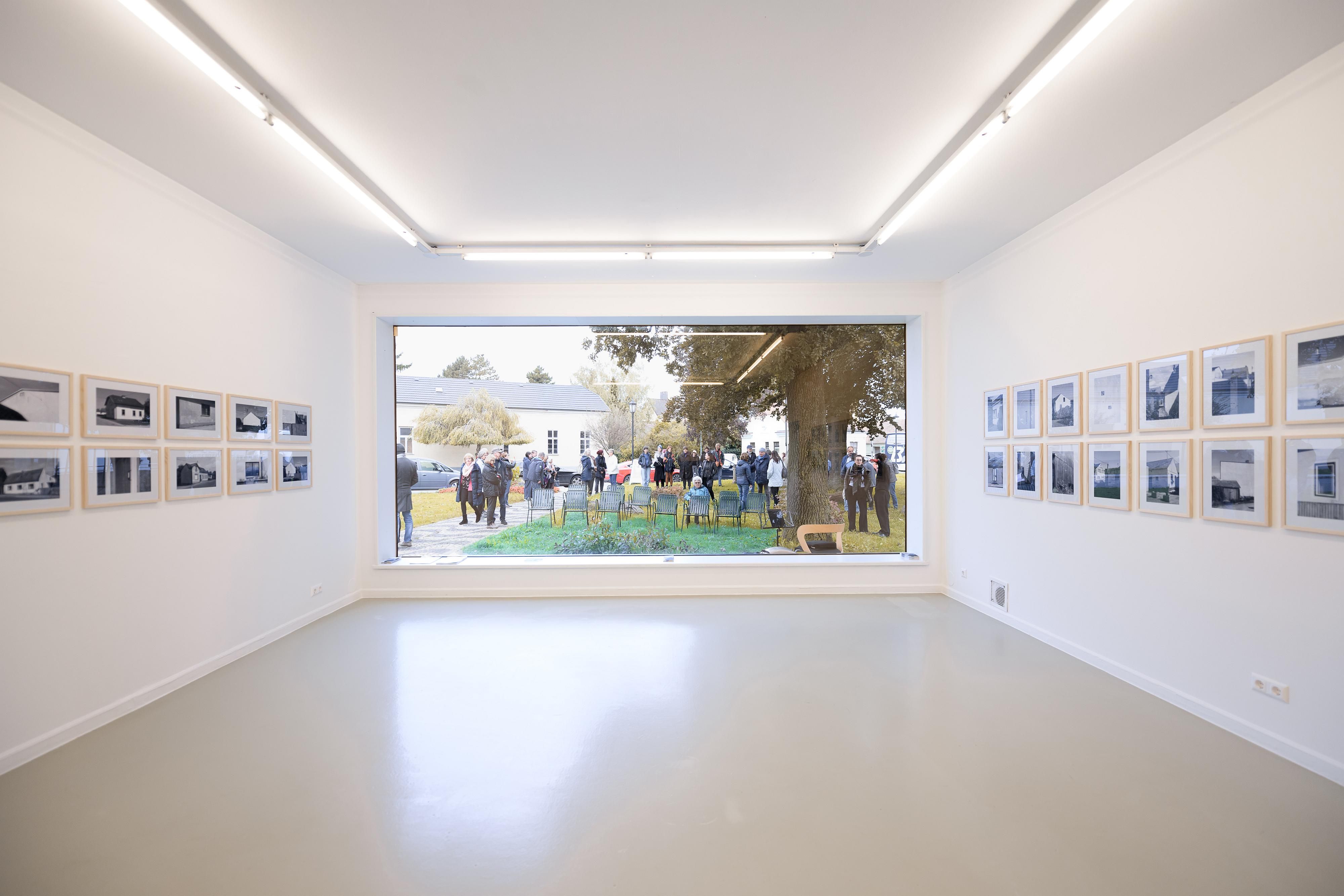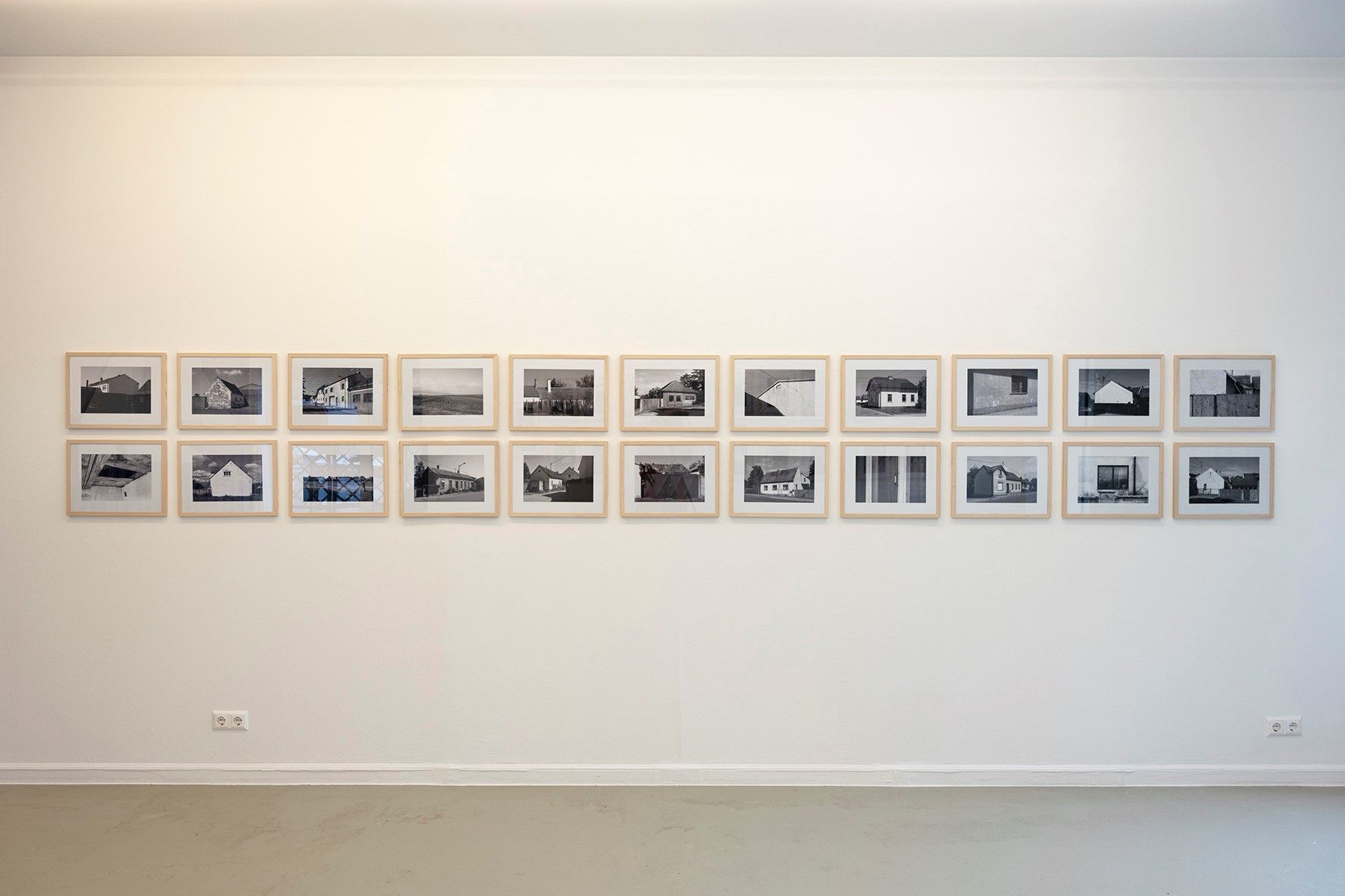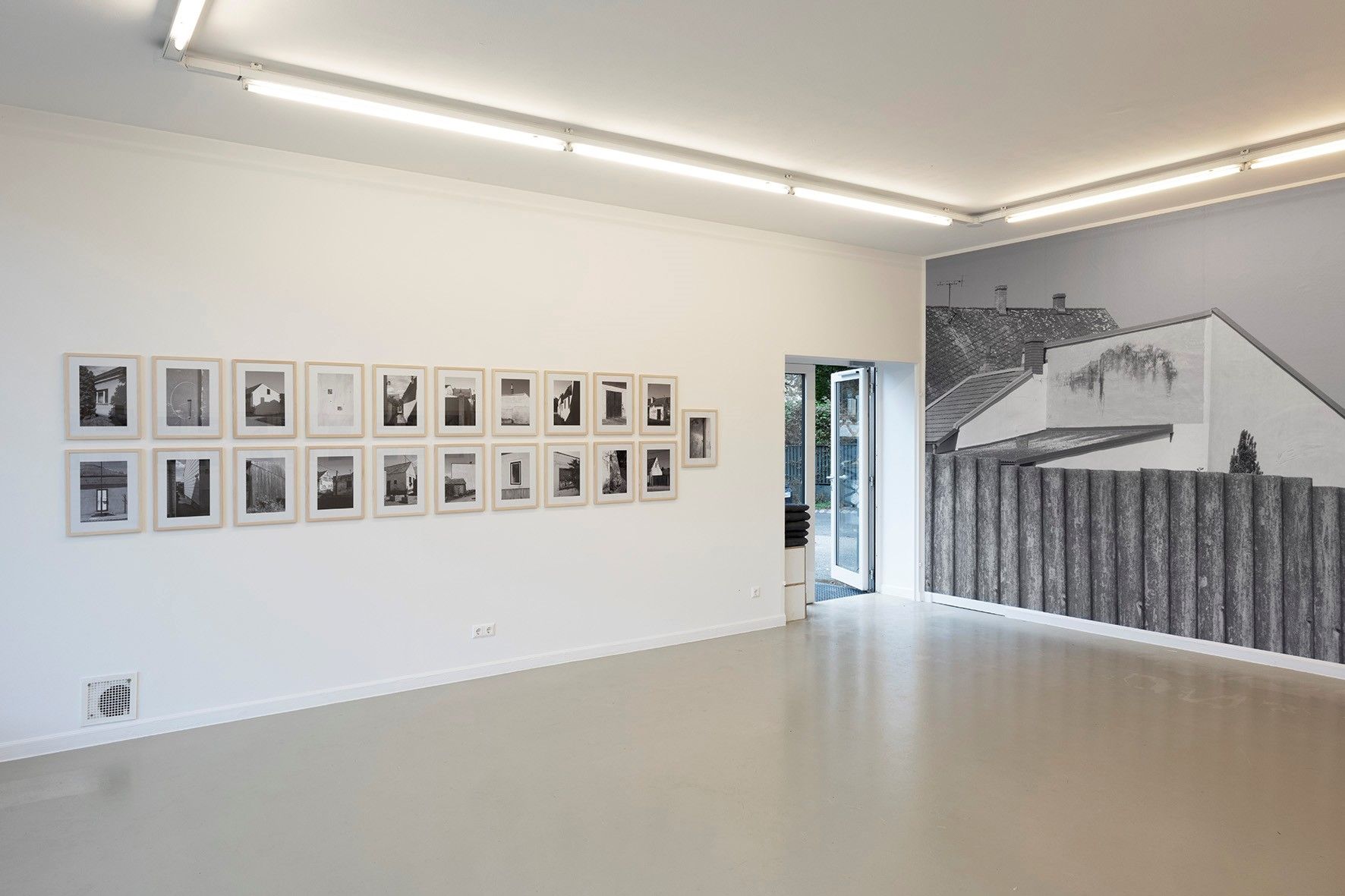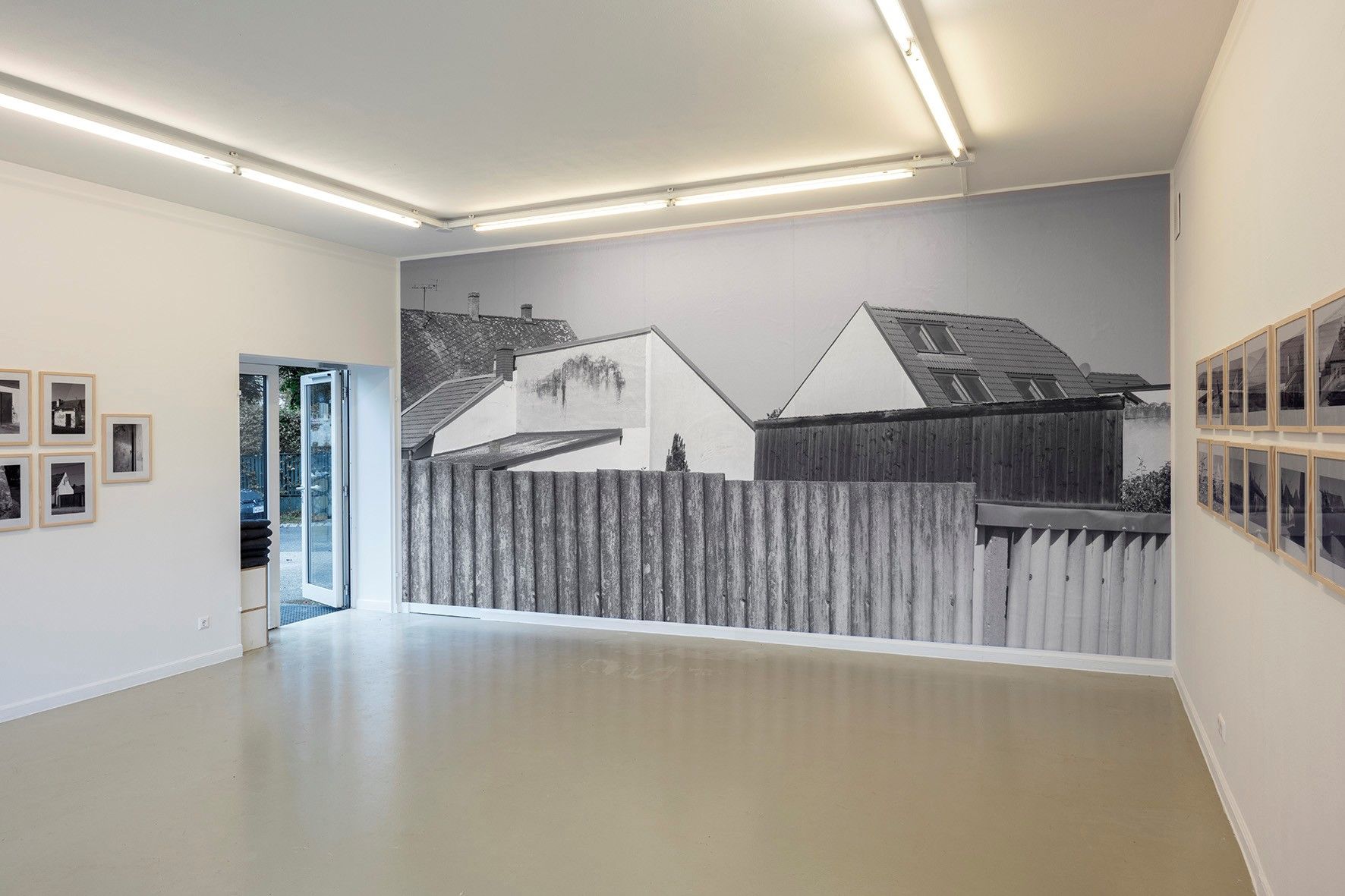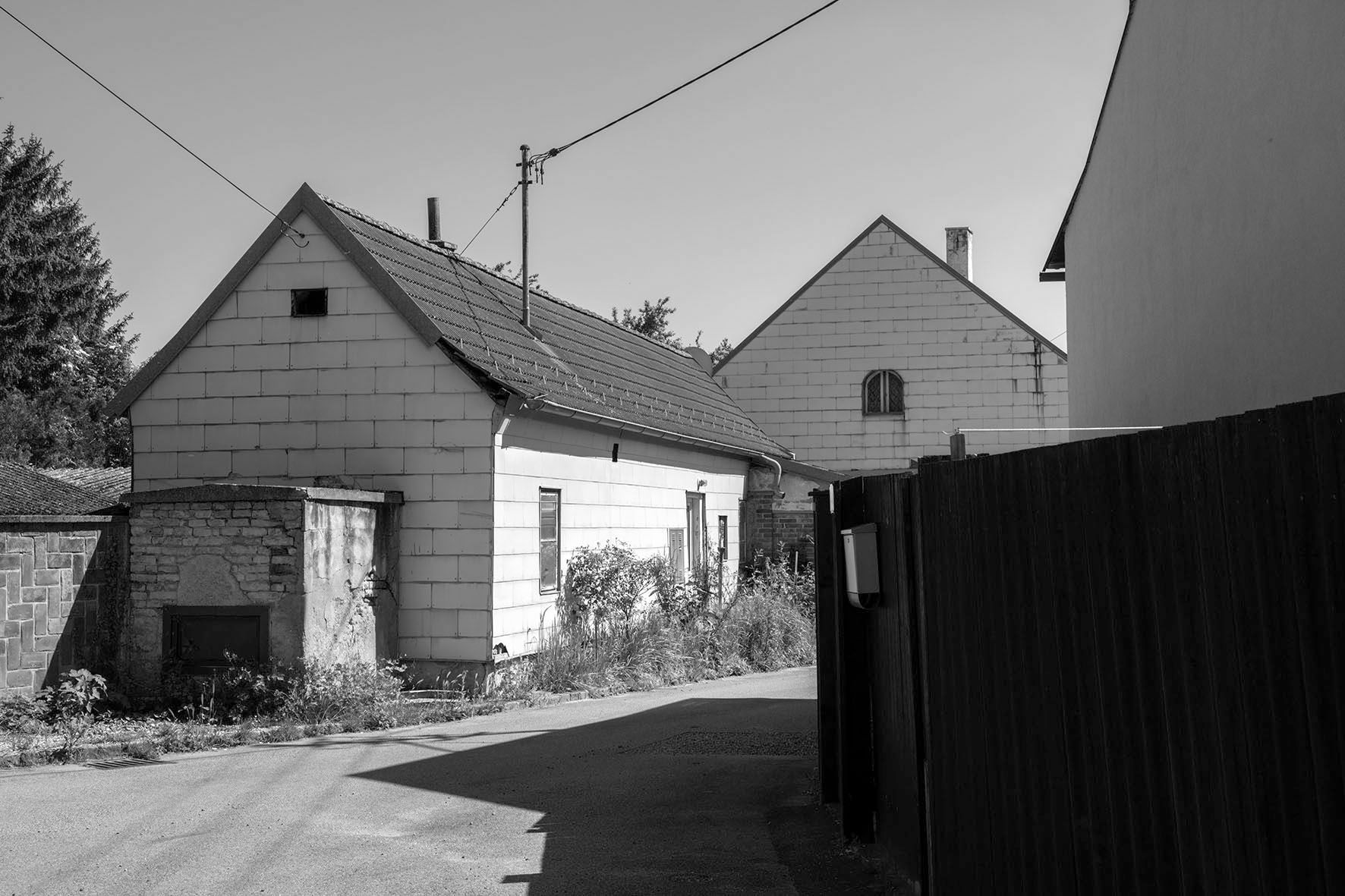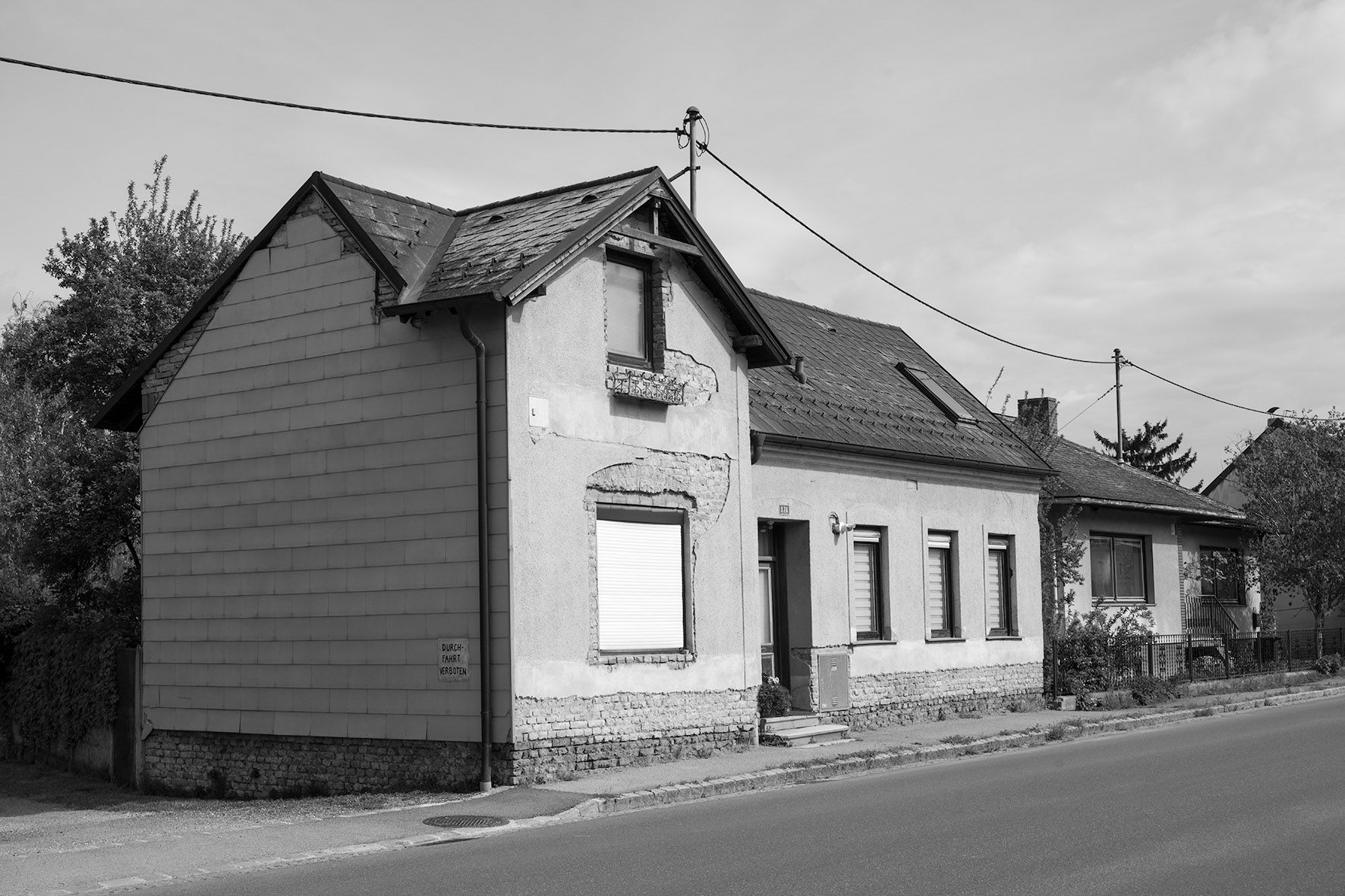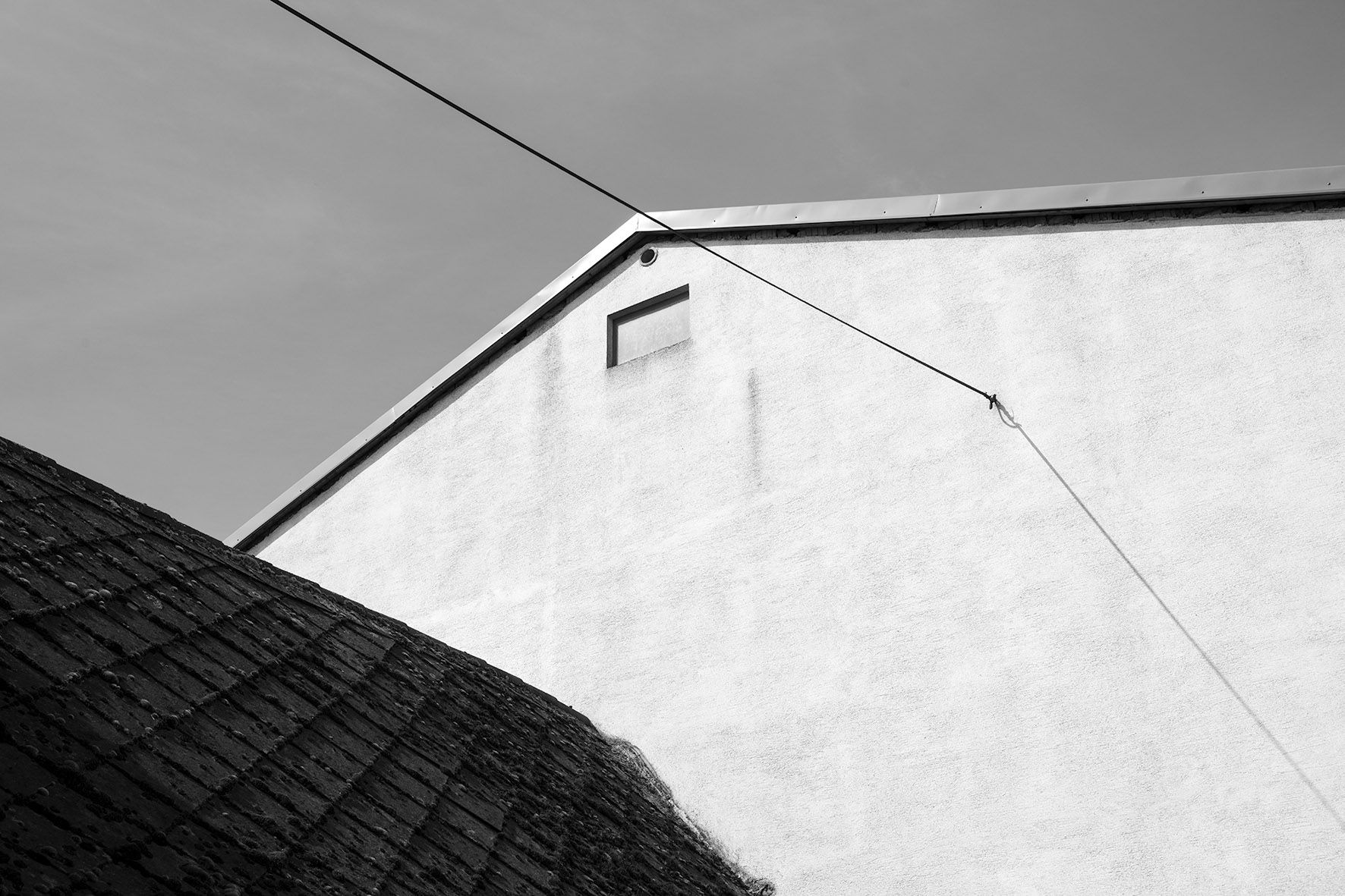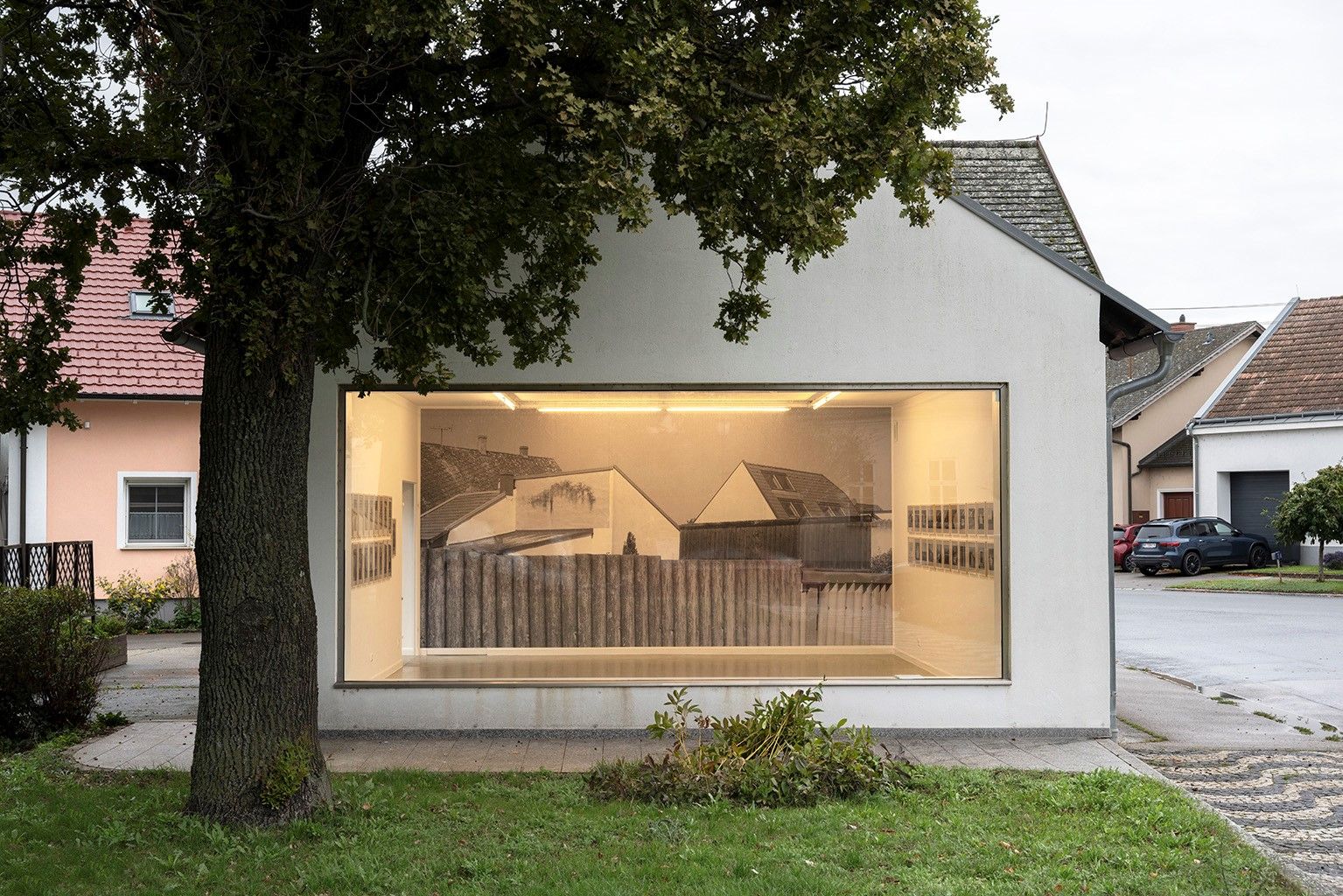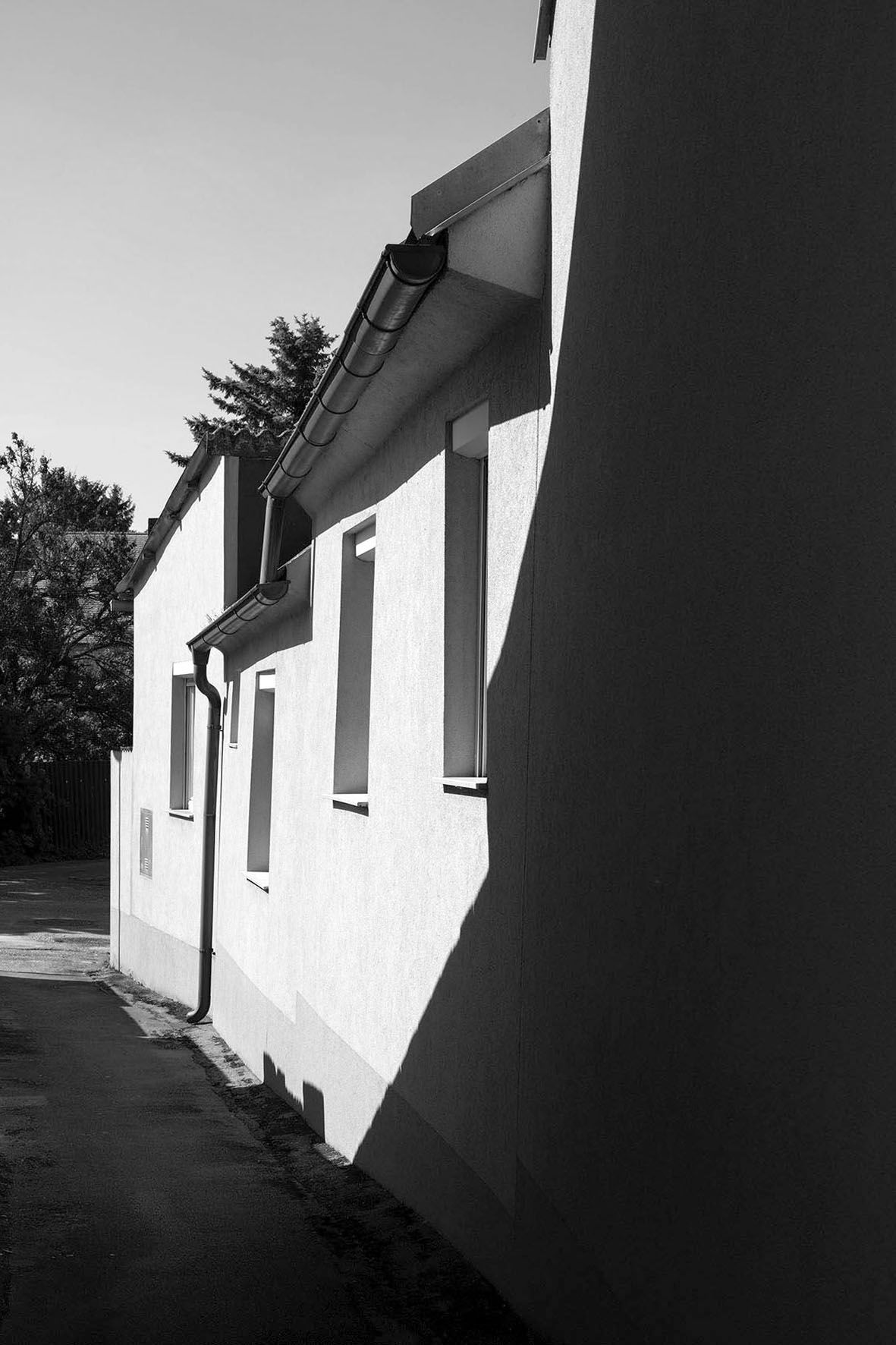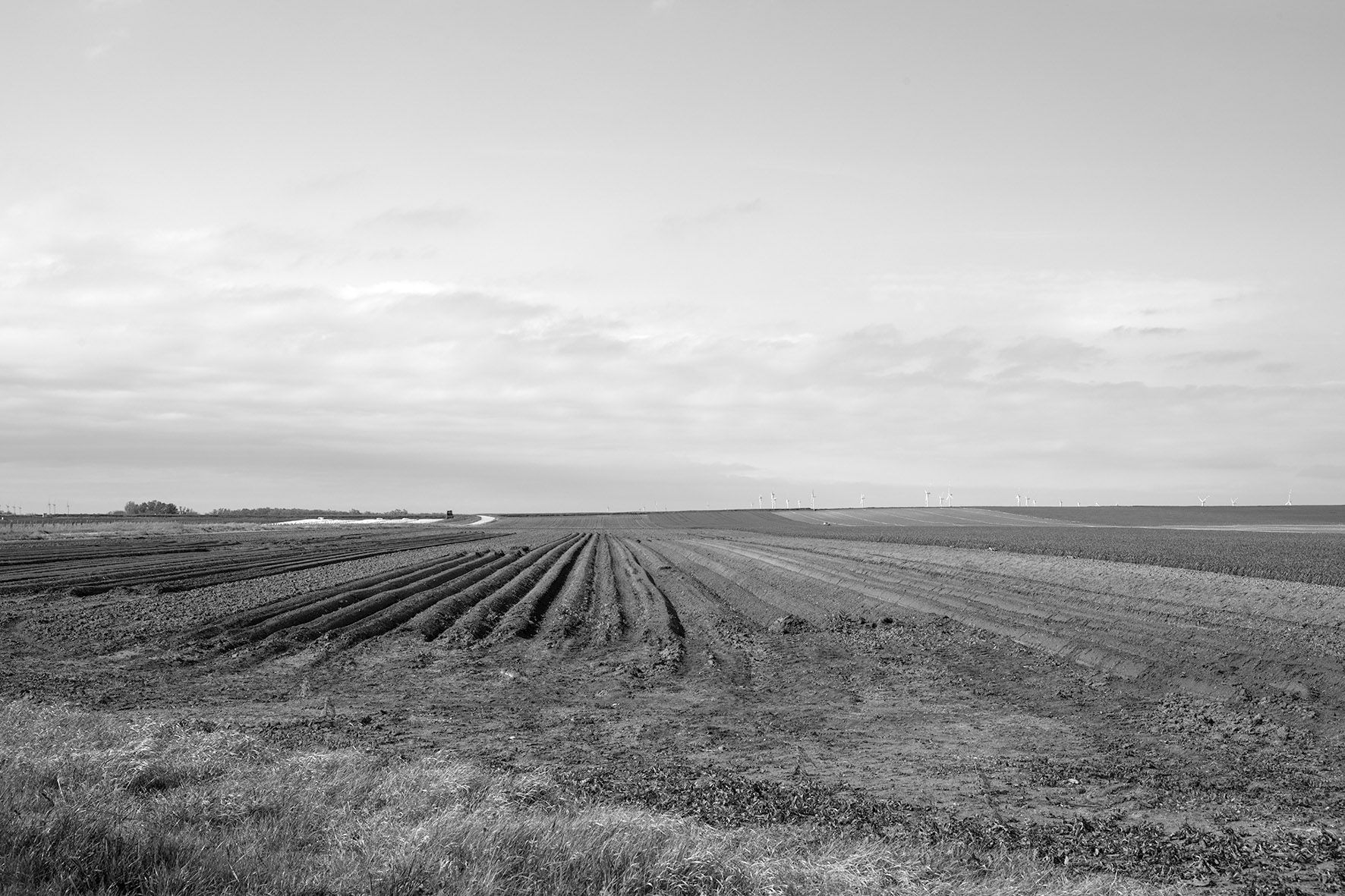Julia Gaisbacher
:
Weikendorf
Back
Information
The exhibition in the Kunstraum can be viewed from outside around the clock and from inside every first Sunday of the month from 3.00 to 4.00 pm!
Yesterday Today - On Julia Gaisbacher’s Weikendorf Project
“I want to see the old Weikendorf,” says Julia Gaisbacher about the jumping-off point for her project. The Kunstraum Weikendorf, which opened in June 2007, was conceived by the Austrian artist Michael Kienzer, who went on to serve as a kind of artistic curator for it for more than ten years. Gaisbacher’s project is now the 36th exhibition in the building that was transformed from a fire station into an art space. One of the Kunstraum’s walls is made of glass, which makes it possible for interested viewers to enjoy exhibitions all year round, day or night. Kunstraum Weikendorf is a best-practice example of how public art can be successful when local residents are involved.
Julia Gaisbacher was born 1983 in Graz and lives and works in Vienna. The photographs and films she creates revolve around research and often contain art historical references. Her artistic practice primarily focuses on urbanism and housing: two themes for which she observes and documents various architectural and structural changes over long periods of time. Because time is a very important factor for Gaisbacher, it also plays a role in this art project, which is simply titled Weikendorf.
The artist was invited to create the project by a jury of members who live in Weikendorf and its surroundings. In preparation for the exhibition, she visited the Lower Austrian community many times. She was accompanied in her visits by the retired architect Robert Hanel, who is also a jury member and who helped her to gradually acquire a feeling for the town’s structure and architecture, so that she could capture these in photographs. In the exhibition space, these impressions are manifested as rows of photographs on two opposite walls, and in the form of wallpaper on the back wall of the Kunstraum’s interior.
Gaisbacher has thus created architectural portraits of a town in the process of transformation using the means of photography. While people are absent from the pictures, the human factor remains omnipresent: we sense humans as the builders, users, and inhabitants of the pictured buildings. Through her style of photography and through the way she has developed the prints and installed them in blocks, the artist creates an insightful and clear characterization of a typical town. In place of focusing on individual traits, she is interested in creating pictures that could be representative of many rural communities.
Weikendorf, like any other small rural town, underwent modernization and technologization, and Gaisbacher’s photographs explore these changes that have been going on since the 1960s, investigating the degree to which they are still visible in the townscape today. Founded in the middle of the 11th century, Weikendorf is now a town with about 2,000 inhabitants in Gänserndorf County. The fundamental transformation of society in the last 150 years from an agrarian to a service society can be directly seen in the state of the town today. Local agriculture no longer plays a major role, while inns and other places where people can get together and socialize are now hard to find. The village that was once defined by agriculture has become a commuter town. The buildings Gaisbacher has photographed are silent witnesses of our history and our way of life. They are mostly now family homes with carefully defined boundaries to separate them from neighboring houses. It is not a coincidence that the back wall in the Kunstraum shows a picture of a garden fence, which could be a metaphor for this development.
For Weikendorf, Gaisbacher followed in the footsteps and drew information from the work of two artists. The first is Elfriede Mejchar (1924–2020), an Austrian artist who, among other things, photographed the Simmeringer Haide (an area near Vienna) and focused on cultural landscapes. Mejchar described her motivation by saying, “I’m not interested so much in people, but rather in what people do: their traces, their places.”[1] Mejchar worked for the Federal Austrian Monuments Office for almost 40 years capturing the changes in buildings and architectural monuments in several series of works. Her style is what people like to call “documentary,” although this does not really do her justice. In fact, in the spirit of the German photographer couple Bernd and Hilla Becher, she actually created artistic documents of her time in an objective and precise style, sometimes with a slightly experimental edge.
Gaisbacher’s second point of reference is the American artist Paul Strand (1890–1976), who is considered to be one of the most influential photographers of the 20th century. In the photograph that Gaisbacher reproduced as wallpaper in this exhibition, she shows a house behind a fence that dominates the picture. This is a reference to one of Strand’s most famous photographs called The White Fence, which he took in 1916 and which was printed for the first time in 1917 in the photographic journal Camera Work, published by Alfred Stieglitz. Considered to be the founder of straight photography, Strand had an unpretentious eye and an instinct for the extraordinary in everyday life, for pictorial compositions, and for an emphasis on lines that can also be detected in Gaisbacher’s pictures. She also shares Strand’s approach of reflecting on the medium of photography—a method that the Russian avant-garde artist Alexander Rodchenko called “eye-opener.”[2] Giving us something to see that is deemed worthy of being captured in a picture has been, and will always be, the task of the medium of photography.
By engaging with this town, its history, its characteristics, and its social interaction, Julia Gaisbacher’s Weikendorf has become a site-specific project. At the same time, however, by choosing black-and-white images and focusing on the complex interaction of architecture and photography, as well as past and present, she also elevates the discourse to a higher, more universal level. Photography deliberately directs our view to what can clearly be seen of yesterday today.
Lisa Ortner-Kreil
[1] Elfriede Mejchar, quoted in Elfriede Mejchar. Ein Leben mit Fotografie, in the television series butterbrot by Harald Burger, no. 17 (2010). See Anton Holzer et. al. (eds.), Elfriede Mejchar. Grenzgängerin der Fotografie, exhibition catalogue, Landesgalerie Niederösterreich, Krems (Munich: Hirmer Verlag, 2024), 32.
[2] Quoted in Bernd Stiegler, Bilder der Photographie. Ein Album photographischer Metaphern (Frankfurt: Suhrkamp, 2006), 69. The author analyzes Paul Strand’s seminal photograph Blind Woman, which shows a blind newspaper vendor. He writes, “In the history of photography, there is at least one picture that not only has blindness as its subject, but also tests and questions the seeing of photography in a peculiar manner” (67).
[MM1]Die Stelle habe ich jetzt angepasst. Klingt viel besser, danke!
Images (9)
